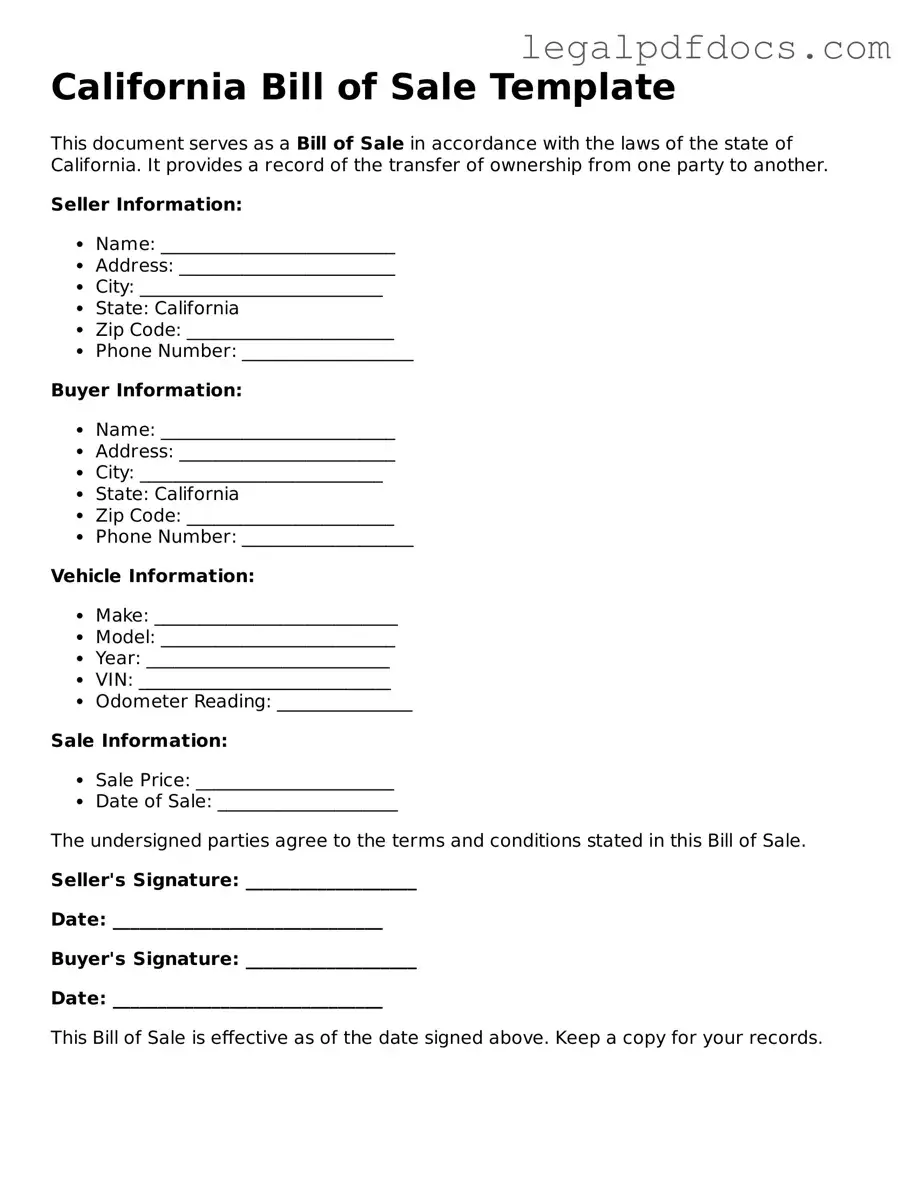Official Bill of Sale Form for California
The California Bill of Sale form is a legal document that serves as proof of the transfer of ownership for personal property between a seller and a buyer. This essential form not only outlines the details of the transaction but also protects both parties by documenting the sale. If you're ready to complete your transaction, fill out the form by clicking the button below.
Open Bill of Sale Editor Here
